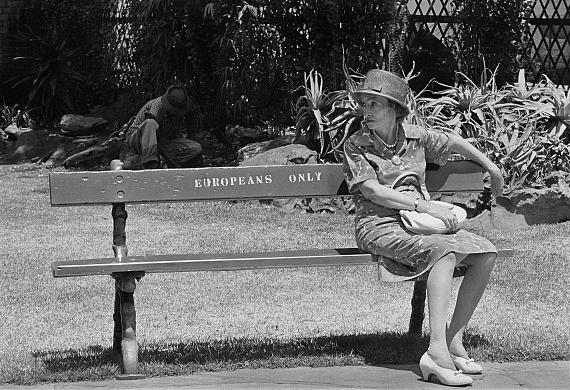
South Africa, 1960s
© Ernest Cole / Magnum Photos
Ernest Cole »
House of Bondage
Exhibition: 2 Jun – 17 Sep 2023
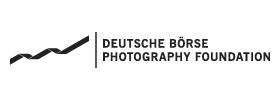
Deutsche Börse Photography Foundation
Mergenthalerallee 61
65760 Eschborn
+49 (0)69-21 11 40 60
foundation@deutsche-boerse.com
deutscheboersephotographyfoundation.org/
by app. only
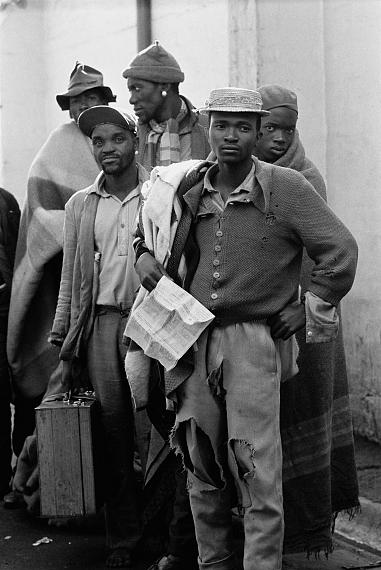
South Africa, 1960s
© Ernest Cole / Magnum Photos
Ernest Cole
"House of Bondage"
Exhibition: 2 June – 17 September 2023
The exhibition can be visited on the Open Saturday, 16 September 2023 from 11 a.m. to 4 p.m without prior registration or as part of a guided tour with prior registration at www.deutscheboersephotographyfoundation.org
The Deutsche Börse Photography Foundation is showing South African photographer Ernest Cole’s oeuvre. An important chronicler of apartheid politics, it is the first major exhibition of his works in Germany. In around 130 photographs, it covers all 15 thematic chapters of his eponymous book, "House of Bondage", and also includes works from the chapter "Black Ingenuity", which was not published in the original edition. The presentation is complemented by early original prints, personal documents of the artist, original editions of published series of images in magazines and a filmed interview with Cole from 1969.
Ernest Cole (1940-1990) chronicled the Black majority’s experience during apartheid in South Africa as forcefully and comprehensively as few of his contemporaries. In his photobook "House of Bondage", published in 1967, he captured countless forms of violence and repression, which, as a Black photographer, he was also subject to. He started working as a photographer at the age of 18, aiming to draw global attention to the grievances of his home country. Being classified as "Coloured" allowed Cole freedom of movement and access to various places which the authoritarian regime would not have granted him as a "Black" person. Cole photographed the precarious living conditions of mine labourers and domestic workers in white households, as well as the miserable state of the transport and health sectors. He paid particularly close attention to the children and young people, who, denied proper education, lived in poverty and despair. As a person directly affected, his insights into the life of Black South Africans in the 1960s are harrowing – marked by oppression, arbitrary police action and expropriation.
In 1966, Cole managed to leave South Africa, secretly getting all his negatives out of the country ahead of his own departure. Fully aware that he would never be allowed to return to his home country once published, he released his photographs in the illustrated book "House of Bondage" in the US in 1967, displaying the horrors of the apartheid system to the entire world in 15 thematic chapters, each accompanied by his own texts. It would, however, take decades for the political situation of Black South Africans to improve. In February 1990, Ernest Cole died just months before this change was heralded, in exile in New York City. At the time of his death, he felt disillusioned by the limited power of his images. Today, "House of Bondage" is considered one of the most important photobooks of the 20th century.
The exhibition "Ernest Cole. House of Bondage" is a cooperation with Magnum Photos. It was curated by Anne-Marie Beckmann, Deutsche Börse Photography Foundation, and Andréa Holzherr, Magnum Photos.
Ernest Cole was born as Ernest Levi Tsoloane Kole in 1940 in Eesterust township near Pretoria. He discovered his passion for photography at the age of eight and started taking pictures just a few years later. In 1958, he started working as an assistant to German photographer Jürgen Schadeberg and later as a photographer for the magazine "Drum", one of the most influential publications for Black readers in South Africa. After further employment with "Zonk!" and "Bantu World", the largest African daily newspaper in Johannesburg, Cole worked as a freelance photographer from 1961.
Many of the photographs taken during this time were later published in "House of Bondage". In 1966, he managed to leave the country for London and then Paris, finally settling in New York City in September. With the support of the Magnum Photos agency, his book “House of Bondage” was published in the US one year later. It is a comprehensive and systematic documentation of the effects of the South African apartheid regime in the early 1960s on the country’s Black population. In the following decades, he alternately lived in Sweden and New York City, but was hardly active as a photographer. Ernest Cole died in New York City in 1990 at the age of 49.
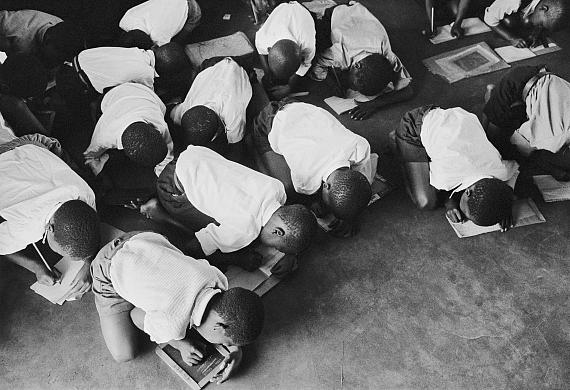
South Africa, 1960s
© Ernest Cole / Magnum Photos
Ernest Cole
"House of Bondage"
Ausstellung: 2. Juni bis 17. September 2023
Der Ausstellungsbesuch ist im Rahmen von regelmäßigen Führungen und am "Open Saturday", 16. September 2023, 11 ‐ 16 Uhr möglich.
Die Deutsche Börse Photography Foundation zeigt das Lebenswerk des südafrikanischen Fotografen Ernest Cole. Es ist mit rund 130 Arbeiten die erste große Werkschau des bedeutenden Chronisten der Apartheidpolitik in Deutschland. Die Ausstellung vereint Aufnahmen aus allen 15 thematischen Kapiteln des gleichnamigen Fotobandes "House of Bondage" sowie Fotografien aus dem in der Originalausgabe des Buches nicht veröffentlichten Kapitel "Black Ingenuity". Ergänzt wird die Präsentation um frühe Originalabzüge, persönliche Dokumente des Künstlers, Originalausgaben von publizierten Bildstrecken Coles in Zeitschriften sowie einem Videointerview mit Cole aus dem Jahr 1969.
Ernest Cole (1940–1990) dokumentierte die Auswirkungen des Apartheidsystems auf die Schwarze Bevölkerungsmehrheit in Südafrika so eindringlich und umfassend wie wenige seiner Zeitgenoss*innen. In seinem 1967 publizierten Fotobuch "House of Bondage" enthüllt er die unzähligen Formen der Gewalt und Repression, denen er als Schwarzer Fotograf auch selbst ausgesetzt war. In der Hoffnung, die Weltöffentlichkeit auf die Missstände in seinem Heimatland aufmerksam machen zu können, begann er bereits mit 18 Jahren als Fotograf zu arbeiten. Die Klassifizierung als "Farbiger" ermöglichte Cole einen Bewegungsfreiraum und Zugang zu vielen Orten, die ihm das autoritäre Regime als "Schwarzer" nicht gewährt hätte. Cole fotografierte die prekären Lebensumstände von Minenarbeitern und Angestellten in weißen Haushalten ebenso wie die miserablen Bedingungen im Transport- und Gesundheitssektor. Sein besonderes Augenmerk galt dabei den in Armut und Hoffnungslosigkeit lebenden Kindern und Jugendlichen, denen eine angemessene Schulbildung verwehrt wurde. Aus der Sicht eines Betroffenen geben seine Aufnahmen erschütternde Einblicke in das Leben der Schwarzen Bevölkerung im Südafrika der 1960er-Jahre, das von Unterdrückung, polizeilicher Willkür und Enteignung geprägt war.
1966 gelang es Cole, das Land zu verlassen, jedoch nicht ohne vorher all seine Negative heimlich außer Landes gebracht zu haben. Wohl wissend, dass er nach der Veröffentlichung seiner Bilder nie wieder in sein Heimatland zurückkehren durfte, publizierte er sie 1967 in dem in den USA erschienenen Bildband "House of Bondage". In 15 thematischen Kapiteln, die er jeweils mit eigenen Texten begleitete, führte er damit der Weltöffentlichkeit die Schrecken des Apartheidsystems vor Augen. Es sollte noch Jahrzehnte dauern, bis sich die politische Lage für die Schwarze Bevölkerung Südafrikas verbesserte. Ernest Cole starb nur wenige Monate vorher, im Februar 1990, desillusioniert von der geringen Kraft der Bilder im Exil in New York City. Heute zählt "House of Bondage" zu den bedeutendsten Fotobüchern des 20. Jahrhunderts.
Die Ausstellung ist eine Kooperation mit Magnum Photos und wurde von Anne-Marie Beckmann, Deutsche Börse Photography Foundation, und Andréa Holzherr, Magnum Photos, kuratiert.
Ernest Cole wurde 1940 als Ernest Levi Tsoloane Kole in Eesterust, einem Township nahe Pretoria geboren. Im Alter von acht Jahren entdeckte Cole seine Leidenschaft für die Fotografie und begann bereits wenige Jahre später, eigene Aufnahmen anzufertigen. Ab 1958 arbeitete er zunächst als Assistent des deutschen Fotografen Jürgen Schadeberg und später als Fotograf für das Magazin "Drum", einer der einflussreichsten Zeitschriften für die Schwarze Bevölkerung Südafrikas. Nach weiteren Anstellungen bei "Zonk!" und "Bantu World", der größten afrikanischen Tageszeitung in Johannesburg, arbeitete Cole ab 1961 als freier Fotograf.
Ab diesem Zeitpunkt entstanden viele seiner Aufnahmen, die später in "House of Bondage" publiziert wurden. 1966 gelang es ihm, das Land zu verlassen. Nach Aufenthalten in London und Paris ließ sich Cole im September 1966 in New York City nieder. Mit Unterstützung durch die Agentur Magnum Photos konnte ein Jahr später seine umfassende und systematische Dokumentation der Auswirkungen der Apartheidpolitik auf die Schwarze Bevölkerung Südafrikas in den frühen 1960er-Jahren in dem Buch "House of Bondage" in den USA veröffentlicht werden. In den folgenden Jahrzehnten lebte er abwechselnd in Schweden und New York City, war jedoch als Fotograf kaum noch aktiv. Ernest Cole starb 1990 in New York City im Alter von 49 Jahren.
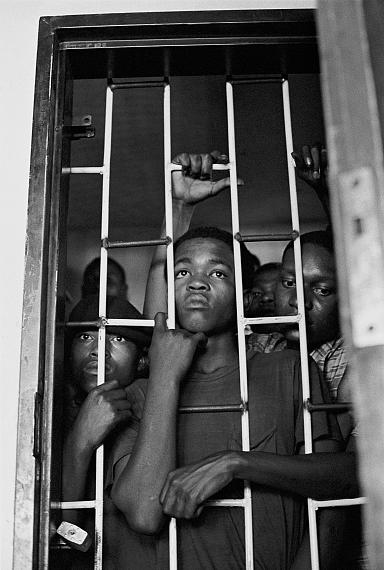
South Africa, 1960s
© Ernest Cole / Magnum Photos
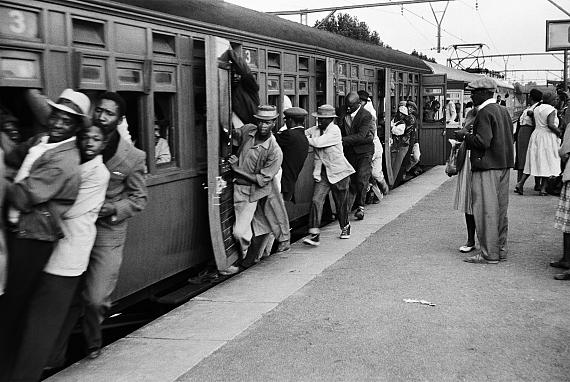
South Africa, 1960s
© Ernest Cole / Magnum Photos